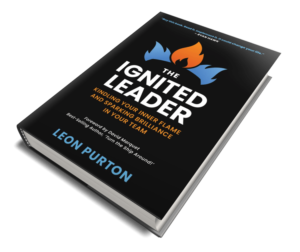How to assemble a Board that will help you grow

I have a habit, and I’m here to let you know it is a good one. When I cross paths with someone who has a unique or experienced perspective that I really value, I ask them to be part of my Personal Advisory Board. When I was working out what important things I should consider about choosing a new job, I reached out to my Board.
These people are not exactly mentors, more like a companies board of Directors. Advisors and strategists with complementary skills and backgrounds, rather than one on one mentors.
What is a Personal Advisory Board?
This is a term I first heard listening to a podcast with Lewis Howes, The School of Greatness (linked is a dedicated episode on the topic). In his talks on the topic, Lewis describes the idea of collecting a group of people within your network who have specific diverse skills that you admire. They may have experiences that compliments yours.
Your advisory board supplements your strengths and experience with their own.
Essentially, the complexity of life requires you to have more than one mentor. More than one advisor.
I have assembled a diverse group of people that I have worked with or reached out to in the past; previous bosses, peers and colleagues, influential people in areas I am interested in that I have connected with, and perhaps most importantly my partner.
When I have a problem, or I am looking at making a significant decision, I reach out to my board. They have helped me over and again, most recently in providing their experience and advice on job options.
The question you may be asking though, is what type of people do you need on your board?

Assembling your Board?
Like the Avengers! No, not really. This is something that happens gradually over time. It evolves as your needs and plans change over time.
You interact with people in and out of your field of expertise, and every now and then you come across someone who inspires you or offers a piece of pivotal advice. These are the types of people you want to be able to reach out to in the future. These are the people that often give of their time, and are good at spotting people that have poor attitudes. They surround themselves with good people.
Adam Grant wrote a book about the concept of Givers, Matchers and Takers (I mentioned it in this article). Givers are people more likely to give of their time and information freely. Matchers will hope to gain something from their investment in you. Takers are those who are always out to win, they try and maximise their gain in every interaction.
Your personal advisory board should prioritise Givers and forget Takers, in fact minimise them in your life. If you take on any Matchers, you need to be clear about what you can offer them in return.
I search for those people who have information, experience or contrasting opinions, that are also Givers. If they are, I know that when I send them a message asking if they can take a call. They are likely to answer it, and probably very quickly.
The best thing about surrounding yourself with people who are Givers. Is that is creates that mentality in you. When others are free with their time and information, you lean in that direction as well. This begins to create a culture of helping each other succeed. When this exists, you are comforted, your stress about asking for help is reduced.

The Ask, and Getting to a Decision with their Help
So, how do you ask people to be on your board. This one is as simple and as hard as you think I’m going to say. You just ask.
You’re going to say that is a cop-out answer. Maybe… So I’ll give you a little bit of a transcript that follows the type of conversation leading up to my ask.
Thanks, I appreciate your insight on this. I like how you re-framed that problem, it really helped me. Actually, I have started to use the terminology of a Personal Advisory Board. Sort of like a company has a Board of Directors for advice and assistance during challenges or key decisions. I try and get people whose advice I really value, people I know can help bring me some clarity, and I think that you could really help me. If I had a challenge or a decision to make in the future that I thought your perspective could really assist me with, could I reach out to you? Will you be part of my Personal Advisory Board?
See, simple. But also hard to put yourself out there. One thing I’ll note.
You will get more traction asking for advice than asking a question.
In asking this, you are also agreeing to be part of their network. Potentially you will be someone they will contact if they have a problem that you may be able to help with.
So how did I use my Board to help with my decision?
I send them a message asking if I can talk to them about something, that I needed their advice. Then I explained what I could about the situation. In this situation, I asked for their advice on what decision framework they might use in this situation.
I’ll write more about the types of perspectives and context they gave me in a future article, but what I will say is that each of those I reached out to increased my confidence and diversity of perspective for making such a critical decision as choosing a new Job. Two of them offered their perspectives via phone call after listening and probing what I had said. Another offered the piece of advice I mentioned in this article over lunch.
There are others on my Personal Advisory Board, that have no idea they are one there. These are people on Podcasts I regularly listen too, writers and thought leaders from various fields in books and on social media. People in my LinkedIn network. All of these people have not been formally requested to be on my Board.
However, if the objective of the Board is to stimulate you to think differently, to probe your beliefs and understanding, to challenge your assumptions. Then these people fit within the definition and have definitely been useful in this process. I consider these people the second tier advisors. The third tier of the Board members are those people you role model, those with even less interaction, but they espouse some attributes or have achieved certain things that are admirable and inspirational.
In summary
You need to start being purposeful about creating a Personal Advisory Board. Much as I wrote about the importance of Mentors, the ability of one mentor to fulfil all of your future challenges is unlikely.
Look out for those people who give value, consistently. Look for those with diverse experience. Look for those who cheer for your success, look for people who are comfortable to offer you a dissenting perspective. Seek professionals in similar personal circumstances and life stages, look for those who are not.
Then ask them. Use my narrative as a starting point, but find your own methods.
I promise you, that having these people in your life will help you. These are not limited to professional advice, career advice. These are people that you can consult on your life. They are your Personal Advisory Board, you need to offer them your trust and then receive theirs in return.
Stay safe and keep smiling.
Leon.
I am a writer with a passion for leadership, growth and personal development. I try and create a spark, a little idea that nests inside and kindles your aspirations.
How to take the Stress out of Your Decision
Why it isn’t the Right versus Wrong choicemedium.comThe ONE thing your team needs to learn to be highly Productive — Fighting against the No Corridor
How you can navigate to YES and grow a team that can toomedium.comBuilding Your Personal Advisory Board (aka Dream Team)
On this episode of The School of Greatness, I bring you a solo episode talking about how you can build a personal…lewishowes.com
